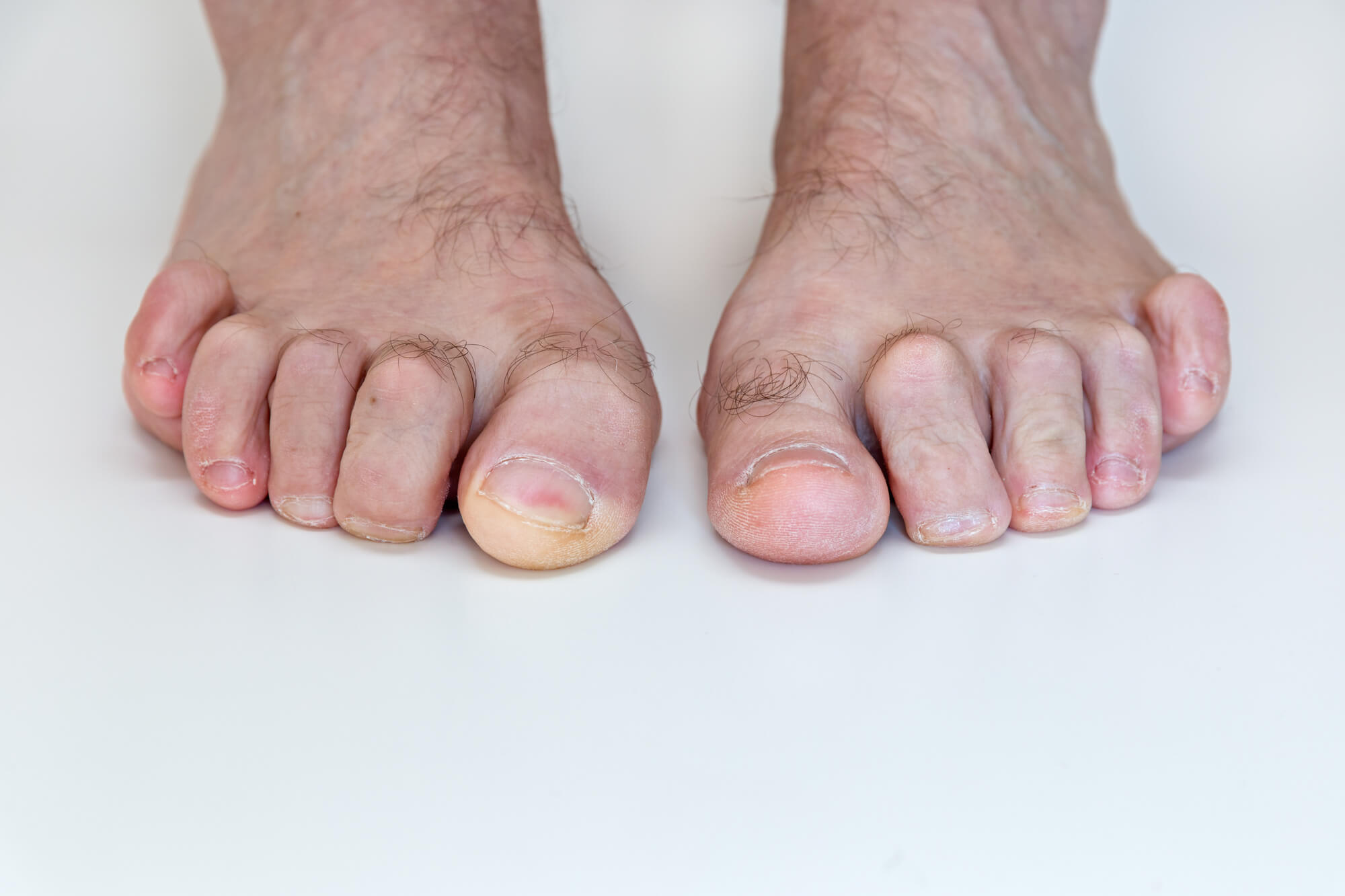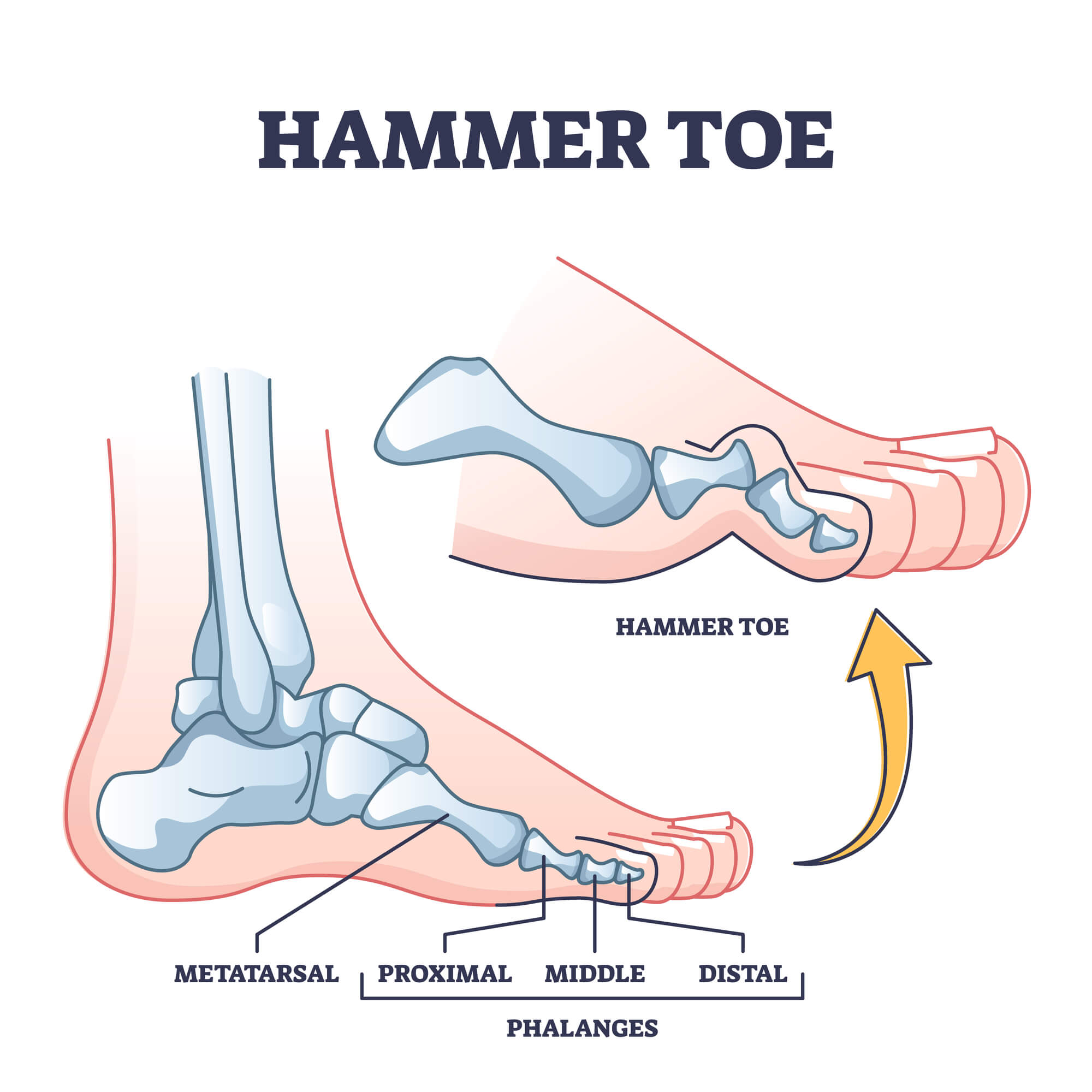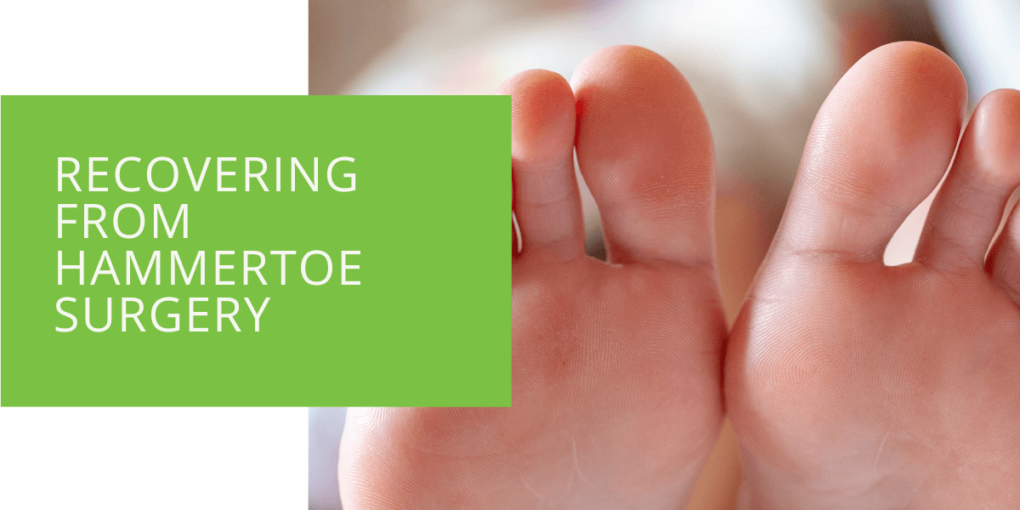Recovering from Hammertoe Surgery
If you suffer from hammertoes, a condition that causes one or more toes to bend abnormally, you know how uncomfortable and painful it can be. Hammertoe is a progressive deformity that will only worsen over time without treatment. In severe cases, hammertoe can only be treated through surgery.
If you have undergone hammertoe surgery, congratulations on taking a significant step toward restoring your foot health! Now that your surgery is complete, the next phase of recovery begins. Recovery time can vary from person to person, but it typically takes several weeks to recover from hammertoe surgery fully.
Preparing for Hammertoe Surgery Recovery
Before your surgery, your podiatrist should have provided you with instructions on what to expect after surgery. It is essential to follow these instructions carefully to ensure a smooth and successful recovery.
Immediately after your surgery, your foot will be bandaged, and you may experience pain, swelling, and bruising. Your doctor may prescribe medication to help manage the pain. Keeping your foot elevated and using crutches or a walker will help keep the weight off your foot and reduce swelling. Having someone help you during the first few days after surgery would be best.
The First Week of Recovery
During the first week of recovery, keeping your foot elevated as much as possible is essential to reduce swelling. This means keeping your foot above your heart while sitting or lying down. Your podiatrist will provide specific instructions on how long you should keep your foot elevated and when you can start to put weight on your foot again.
Your doctor may have also prescribed antibiotics to prevent infection, and you should follow any wound care instructions carefully. Keeping the surgical incision clean and dry is essential to reduce the risk of infection.

Weeks 2-4 of Recovery
As you progress through the second to fourth week of recovery, you will likely feel more comfortable putting weight on your foot. However, it is essential to follow your doctor's instructions carefully and not push yourself too hard. Your podiatrist may recommend physical therapy or exercises to help regain strength and flexibility in your foot.
During this recovery phase, you may transition out of bandages and into more supportive shoes or braces. Your doctor may also recommend wearing special orthotic inserts to help support your foot and prevent future hammertoes.
Long-Term Recovery
It is important to remember that recovery from hammertoe surgery is gradual, and it may take several months to recover fully. Your podiatrist will provide specific instructions on when you can return to normal activities, including work, exercise, and wearing high heels.
To prevent a recurrence of hammertoes, it is essential to wear shoes that fit properly and do not put pressure on your toes. Maintaining good foot hygiene and keeping your feet clean and dry are also important.
In some cases, hammertoes can recur even after surgery. If you notice any signs of your hammertoe deformity returning, such as toe bending or pain, you must contact your podiatrist immediately.

Tips for Managing Pain and Discomfort During the Recovery Process
Recovering from a hammertoe surgery can be a painful and uncomfortable process. Fortunately, several natural remedies and pain management techniques can help alleviate pain and discomfort during recovery. Here are some tips to help you manage pain and discomfort after hammertoe surgery:
- Ice packs: Applying ice packs to your foot can help reduce swelling and pain. Wrap a bag of ice or a cold pack in a towel and apply it to your foot for 15-20 minutes, several times daily.
- Epsom salt baths: Soaking your foot in warm water with Epsom salt can help relieve pain and swelling. Epsom salt contains magnesium, which can help relax muscles and ease discomfort. Fill a basin or bathtub with warm water and add a cup of Epsom salt. Soak your foot for 15-20 minutes several times a week.
- Over-the-counter pain medications: Your doctor may recommend over-the-counter pain medications such as ibuprofen or acetaminophen to help manage pain and discomfort. Follow the recommended dosage and speak to your doctor before taking new medications.
- Rest and elevation: Resting your foot and keeping it above heart level can help reduce swelling and pain. Take breaks throughout the day to elevate your foot and avoid standing or walking for long periods.
- Gentle stretching: Gentle stretching and range-of-motion exercises can help improve circulation and reduce stiffness in the foot. Your doctor may recommend specific exercises or physical therapy to help you recover.
Speaking to your doctor before trying new pain management techniques is important, especially if you are taking medications or have any underlying health conditions. With the right pain management strategies and support from your podiatrist, you can successfully manage pain and discomfort during recovery and return to normal activities as soon as possible.
Conclusion
Hammertoe surgery is a significant step towards regaining your foot health and reducing the discomfort and pain associated with hammertoes. Following your doctor's instructions carefully and taking the time to rest and recover can ensure a smooth and successful healing process. If you have any questions or concerns during your recovery, do not hesitate to contact your podiatrist for guidance and support.
FAQ
How long after hammertoe surgery can you walk?
The timeline for weight-bearing after hammertoe surgery can vary depending on the extent of the surgery and the individual's healing progress. Your doctor will provide specific instructions on when and how much weight you can put on your foot during recovery. Generally, patients are advised to avoid putting weight on their feet for the first few days after surgery and gradually increase weight-bearing as the surgical site heals.
How painful is hammertoe surgery?
Hammertoe surgery can be a painful procedure, and patients can expect discomfort and pain during recovery. However, your doctor will provide pain management strategies and medications to help alleviate pain and discomfort. It is important to follow your doctor's instructions carefully and avoid overexerting yourself during recovery.
Do you wear a boot after hammertoe surgery?
Whether or not you need to wear a boot after hammertoe surgery depends on the extent of the surgery and your doctor's specific recommendations. In some cases, a walking boot or brace may be recommended to help support the foot and ankle during recovery. Your doctor will provide detailed instructions on any post-surgical devices you may need to wear and for how long.
How long does it take to recover from hammertoe surgery?
The recovery time for hammertoe surgery can vary depending on the extent of the surgery and the individual's healing progress. Generally, it takes several weeks to fully recover from hammertoe surgery, with some patients requiring up to 6-8 weeks for a full recovery. During this time, it is important to follow your doctor's instructions carefully, rest and elevate your foot, and avoid putting too much weight on it. Your doctor will provide specific instructions on when you can return to normal activities and any long-term care or maintenance that may be required.

